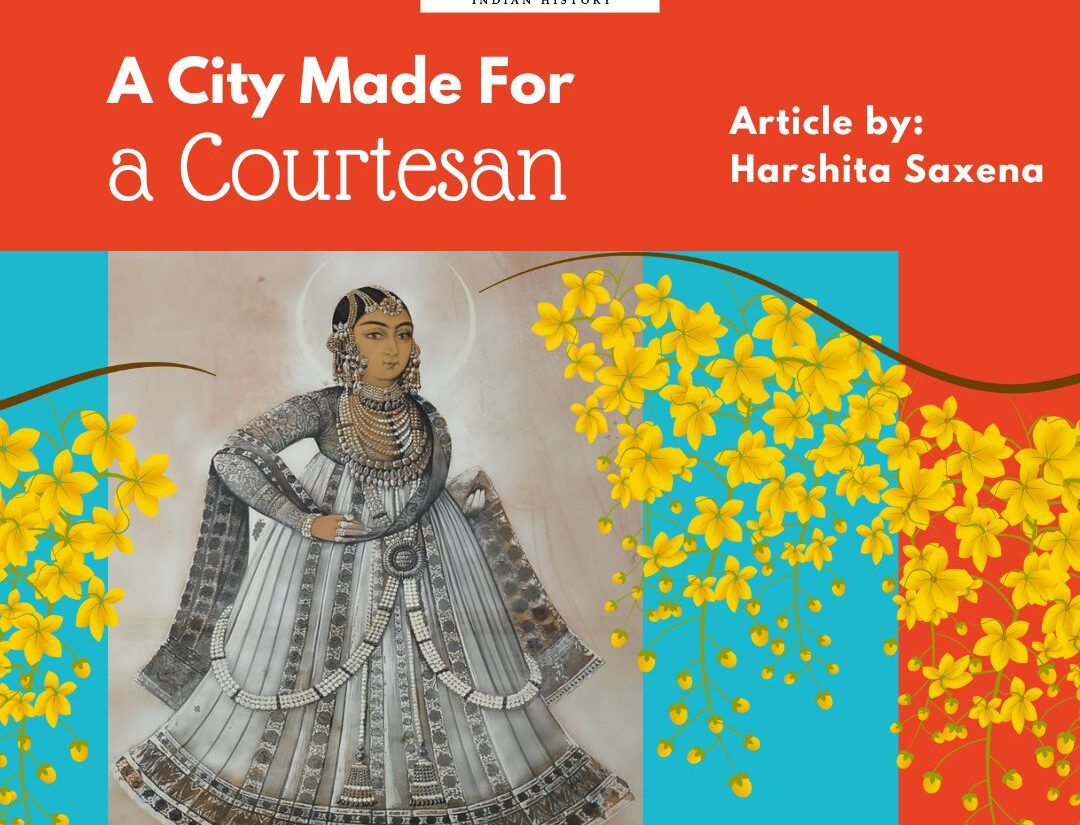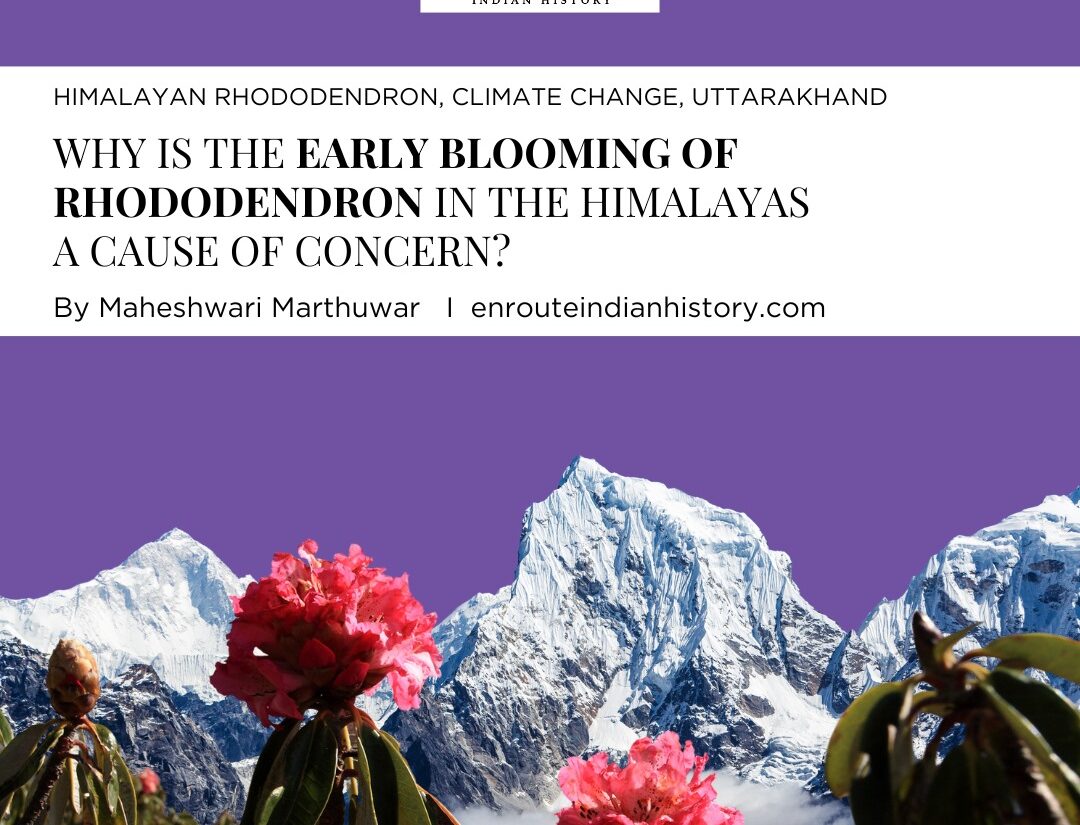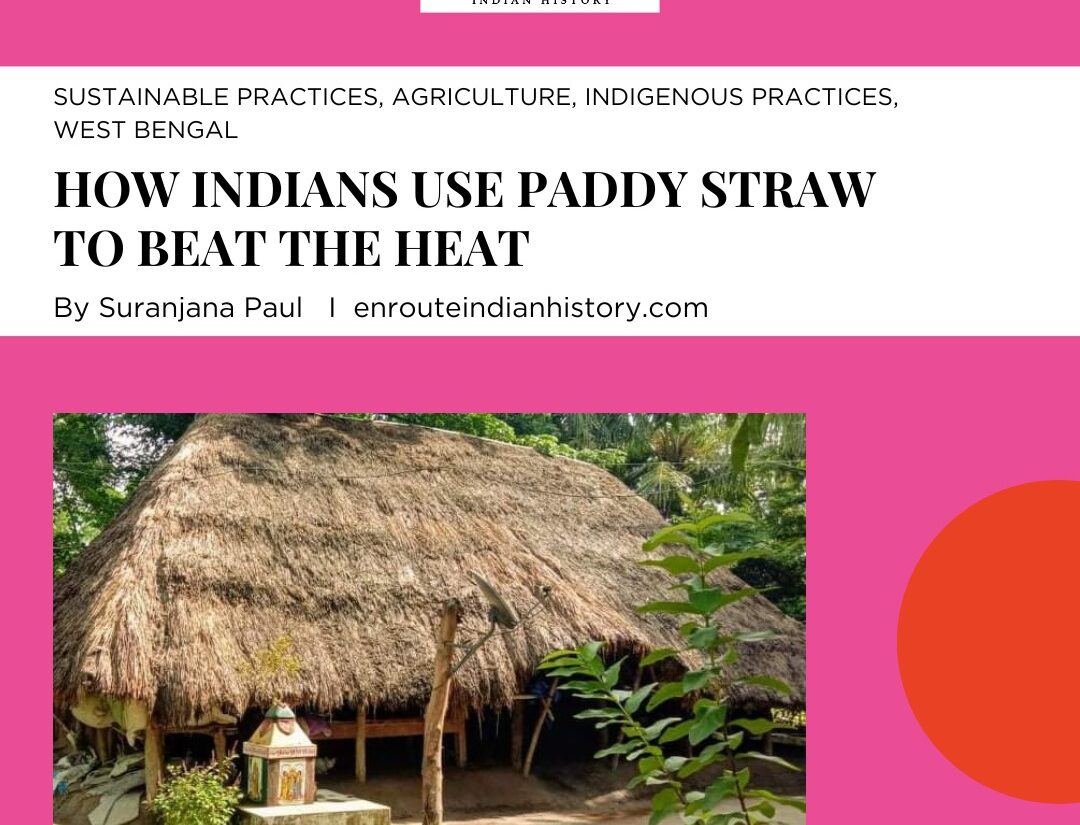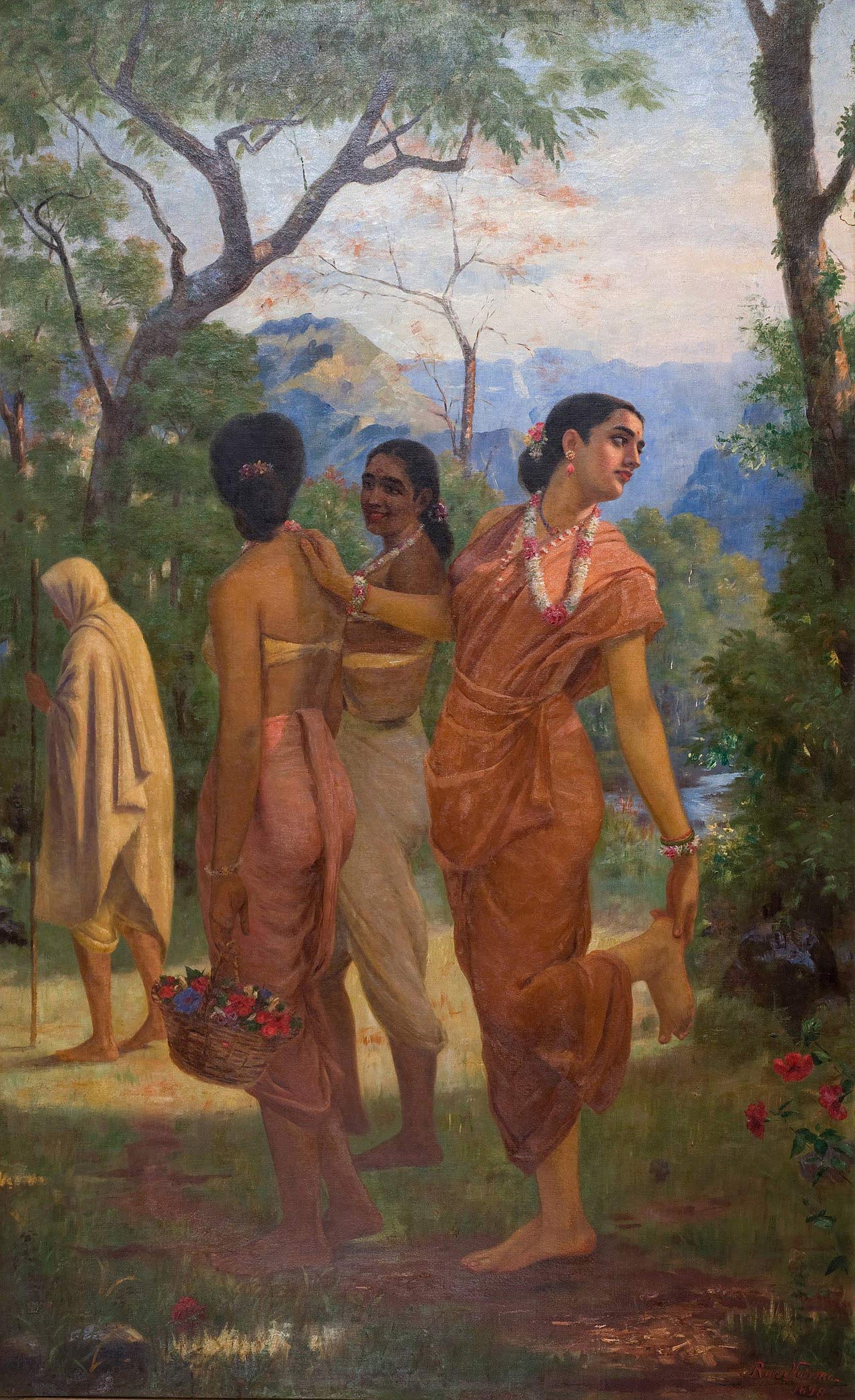
To keep the name of a region after certain political, cultural, or linguistic forces is not something new to Indian history, but to encounter a city named after their love is not something that one finds every day and therefore must be eternalized. The city of Hyderabad was founded by Muhammad Quli Qutb Shah, the 5th ruler of the Kingdom of Golconda, in 1591 CE, on the south bank of the river Musi, a major tributary of the river Krishna. It was established as a twin capital to the fortress of Golconda which was already in existence as the stronghold of the Qutb Shahi kingdom.
There are contradictory views about the name of the city. According to one section of scholars, it was named ‘Bhagyanagar’ on account of the Nizam Quli Qutb Shah’s love for a local courtesan, Bhagmati, who used to live in the village of Chichalam which was subsumed into the capital city. The other argument is that the city was named either ‘Baghnahar’, the Garden City, or Haidarabad after the name of the 4th Caliph of Islam which is testified by the following Persian line- “the walls and the doors of the Deccan bear the name of ‘Ali’.”

Image 1: Bhagmati and Muhammad Qutb Quli Shah
It is said that the Nizam was so madly in love with this Hindu courtesan, that every evening he would cross the river Musi, to visit Bhagmati in Chichalam, for he couldn’t sustain without watching her dance, and listening to her soulful voice. Legend has it that once when Golconda was struck with heavy rains and the river Musi was flooded, the Nizam got worried and desperate to meet Bhagmati and thus crossed the flooded river, and saved her. Thereafter, they got married and later when she embraced Islam, she was renamed as Hyder Mahal, giving the city its name- Hyderabad!

Image 1: Street View of Hyderabad (British Library)
COURTESAN’S UNDER THE NIZAMS OF HYDERABAD
The courtesans or as locally called in North India as tawaifs were skilled singers and dancers, who were essentially employed in the Indo-Muslim state and noble household establishments, and were regarded as significant participants in politics and society. Much of the literature has sensualized tawaifs and has been lumped into one category of women skilled in poetry, song, and dance, who also serve their male masters sexually. However, there were regional variations- ganikas (courtesans in early Sanskrit texts), devadasis (Hindu temple dancers), naikins (Goanese singing and dancing girls), etc.
In the late 16th and mid-17th centuries, three Hindu courtesans became legendary. The first one was Bhagmati. Then under the 7th Nizam, Abdullah Qutb Shah (1625-72), Taramati and Pemamati (possibly sisters) were the favorite performers at the court. We know that Taramati even constructed a caravanserai that still stands, and it is used today for cultural performances. The third and the most popular was Chanda Bibi, to whom the second Nizam, Ali Khan, gave the title Mahalaqa Bai.
 Image 2: Queen Bhagmati, adorning the beauty of a flower
Image 2: Queen Bhagmati, adorning the beauty of a flower
The paintings of the Deccan give us an insight into the lifestyle of the courtesans. In the miniatures depicting courtesans, we find a fusion of European, Persian, and indigenous elements mainly during the Golconda phase. The Hyderabad school of paintings- a synthesis of Mughal and Deccani styles- gave a new direction to these paintings. One such painting is where Bhagmati is shown standing under a branch of a tree, wearing a transparent skirt while enjoying a sip of wine. In another painting of courtesan Taramati, she is shown seated on a terrace listening to a musician, while being dressed in a typical Hyderabadi style with a turban and textile pattern. Whereas, Premamati, is depicted swinging with her attendants with a beautiful Deccani spring background, enjoying the fragrance of a small flower, which she holds in her right hand. She stands facing right in profile, with garments and jewelry typical of Golconda.

Image 3: Nizam Abdullaha Qutb Shah with Taramati and Premamati, and others
The luxurious lifestyle of the courtesans is well illustrated in one of the paintings where the courtesans in a harem are enjoying the exotic life and pleasures of the palace. A color – scheme of blue sky, orange and yellow flowers, pink flower–filled carpets, yellow, pink, and brown garments, etc., can be perceived in the painting, along with the musicians who are entertaining the ladies. Hence, the courtesans used to have their own courts complete with wine and entertainment. Beautiful carpets are spread along with cushions and a large number of wine bottles lay scattered.
Karen Leonard informs us that the court cases from Hyderabad state in the 1870s contain fascinating material about the lifestyles of Hyderabad’s 19th-century courtesans. These women had access to leading political figures and exercised considerable financial and social independence.
Given the close connections among those clustered in the old walled city, political access and influence continued to empower courtesans. They were able to establish proximity with the state bureaucrats and nobles, and sometimes with as powerful figures as in court, with property owners, and always served as confidants, gatherers, and dispensers of information. The Hyderabad courtesans earned for themselves but also for others by regulating in different ways, first by their own establishment heads or ‘mothers’ and then by officials and employees of the Nizam’s household administration and the state judicial system, including the Diwan or Prime Minister himself.
MAHLAQA BAI CHANDA: MORE THAN A COURTESAN
Chanda Bibi was awarded the title of Mahlaqa because of her beauty- “moon-faced.” Despite being a courtesan, she was amongst the ranks of the highest nobility and had 500-foot soldiers and drummers to announce her entrance. Her elevated status was such that the tawaifs across Hyderabad jumped up to the top of the hierarchy among performers and were given special privileges. She was at once, both a warrior and a graceful performer; a politician and a kind-hearted woman who gave away all her possessions to homeless women upon her death.
She was also gifted with a sharp mind and was smooth with words. She could debate with politicians like Mir Alam (Prime Minister of Hyderabad) and negotiate with the Marathas using diplomacy and thus was often consulted by politicians on policy matters. She was even awarded big jagirs (tracts of land) like Nampally, Adikmet, Hyderguda, etc. She was also given the status of a ‘nobleman’ by the Nizam and appointed to the ‘umrah’ (the highest nobility).
Culturally, she has contributed to the field of poetry. Gulzar-e-Mahlaqa, made her the first woman to publish a diwan(collection of Urdu ghazals).
The book was authored and calligraphed by her in 1798. She was also well-versed in classical music as she was trained by Khush Hal Khan, the great-grandson of Tansen. Her skill and speciality was in love songs and would accompany the music in the Deccani style of Kathak. Also, she used to organize a mela (fair) at Lingampally Bagh in Hyderabad every year for seven days where men of religion, literary repute, artisans, and fakirs (ascetics) would gather and interact under her aegis, and be honored by her. She had a love for knowledge, built a library full of books on arts and sciences, and commissioned the Mahnama, a new history of the Deccan. Socially, she also started a school with 300 female students, as the idea of women empowerment was well established for her.
PRESENT DAY RED LIGHT AREA OF HYDERABAD: MAHBUB KI MEHENDI
Mahbub ki Mehndi, the dancing girl’s locality, named for Nizam Mahbub Ali Khan, was north of the Musi River. The area has seen courtesans like Mah Laqa Bai performing. The courtesans and other performing artists held a respectable position in Hyderabad before Aurangzeb’s reign, after which they all got displaced and concentrated in this particular area in the early 20th century. However, in the 1980s, it was declared a ‘red light area’, alleging the functioning of sex work/prostitution. We also find a 1971 movie, with the same name (Mehboob ki Mehendi), where the actor wishes to marry a prostitute’s daughter. However, later in 1996, the area was evacuated by an NGO that helped the women to find ‘decent’ jobs and children, a better life.
Thus, once regarded as influential political and cultural beings, are now disregarded and degraded by the societal norms and are struggling to survive and establish an identity of their own.
REFERENCES
ARTICLES
- Leonard, Karen. “Political Players: Courtesans of Hyderabad”. https://escholarship.org/content/qt2148b30c/qt2148b30c_noSplash_078763671a09cc573b7a5ee1bd305957.pdf
- Joshi, Meeta. “The Courtesans in Deccan History”. Journal of Emerging Technologies and Innovative Research, Vol 6, Issue 6. 2019.
BOOK
- Prasad, Dharmendra. Social and Cultural Geography of Hyderabad City: A Historical Perspective. Inter-India Publications. 1986. Pp.1 and pp. 6
WEBSITES
- Hyderabad History | PDF
- Mahlaqabai Chanda: Courtesan Royale from the Deccan — Google Arts & Culture
- Mah Laqa Chanda — Google Arts & Culture
IMAGES
- https://www.google.com/url?sa=i&url=https%3A%2F%2Fgloballovemuseum.net%2Fportfolio-items%2Fmuhammad-and-bhagmati%2F&psig=AOvVaw2SuXtHeFw-Cpr24l33mGpa&ust=1693144811829000&source=images&cd=vfe&opi=89978449&ved=0CBAQjRxqFwoTCLils4q–oADFQAAAAAdAAAAABAi
- https://ogimages.bl.uk/images/019/019PHO0000430S6U00006000[SVC2].jpg
- https://1.bp.blogspot.com/-xF2dI8Sb1tM/XSNUoP1MCMI/AAAAAAAARJw/DAad316FHf405IxZdgZOV22lz6EGqq0bwCLcBGAs/s1600/notesonindianhistory-bhagmati-lover-of-sultan-%2Bmuhammad-quli-qutub-shah.webp
- http://hyderabadstory.blogspot.com/2016/11/taramati-and-premamati-royal-dancers-at.html
- https://lh3.googleusercontent.com/ci/AA1T9HIWu6k7vcD8PM4B4NiJ8e1asB26YqQt6QqEHwKEZGQ_ruCuqgLJ6hiPmSSxdwzfT3Xf2PicWw=s1200
- https://upload.wikimedia.org/wikipedia/commons/thumb/7/71/Mah_Laqa_Bai_dancing.jpg/1200px-Mah_Laqa_Bai_dancing.jpg?20180225152830
- May 15, 2024
- 6 Min Read


























